- Home
- J. A. Jance
Dance of the Bones Page 20
Dance of the Bones Read online
Page 20
“A lot of the time Joseph and Martin come by the garage in the mornings and sit outside at the picnic table under that big palo verde tree. Martin said they were there today. He claims he saw a pickup—a black pickup—stop by our house. He says Gabe got in and rode off with whoever was driving.”
“Did he get into the vehicle under his own steam?” Lani asked. “Or was he forced into it against his will?”
“That’s what it sounded like, but I’m not sure how reliable Martin is. The old man is blind, and Martin smells like he’s blind drunk. He had no idea about the truck’s make and model and couldn’t identify the driver. I’m not sure what to do.”
“Have you told Delia?”
“I wanted to talk to you first.”
“Look, Leo,” Lani said. “If Gabe was forced into the vehicle, you and I both know that this is far more serious than Gabe just wandering off on his own. Are those FBI agents still in town?”
“As far as I know. The last I saw their Suburban was parked over by the café.”
“We need to report this,” Lani said, scrambling out of bed. “Has anyone reported Tim as missing?”
“I doubt it. Who would? Max is in jail. Paul and Carlos are dead. Their mother is in the hospital.”
“Then we have to,” Lani insisted. “The FBI agents need to know that both Gabe and Tim are missing and that, because of the note, we know Gabe may be tied in with whatever the José brothers have been up to. You go tell Delia. Don’t tell her over the phone. Talk to her in person. I’ll track down the agents and talk to them.”
“Wouldn’t you rather talk to Delia?” he asked.
“Sorry, Leo,” Lani said. “I’ll take the easy duty—Milgahn FBI over a pissed-off Delia Ortiz, any day. After you talk to Delia, you need to let Law and Order know about this, too.”
When Lani arrived at the café the Suburban was gone, and only one of the two agents lingered inside. Agent Howell was there; Agent Armstrong wasn’t. The first time Lani had met Agent Howell, she had been at a distinct disadvantage. Therefore, it was no accident that she showed up at the café in full M.D. regalia—a pair of scrubs topped by a lab coat and with her name tag fully visible. Clearly annoyed at the interruption, Agent Howell looked up from her computer and then closed the lid abruptly as Lani sat down at the table without waiting for an invitation.
“I came to talk to you about Gabe Ortiz,” she said.
“The boy from your campout?”
Lani nodded. “He and the youngest José brother, Timothy, are best friends, and as far as we can tell, they’re both missing. With Paul and Carlos dead, I’m worried about Tim. He hasn’t been seen since last night, and Gabe was seen possibly being forced into an unidentified pickup earlier this morning.”
Leaning back in her chair, Agent Howell frowned. “Just how is it that you happen to know the names of the two victims? That information has yet to be released.”
Lani stiffened. Clearly Agent Howell had focused on only one small part of what Lani had said. If that’s how the woman was going to play the game, Lani could, too.
“I’m not sure how the names came to my attention,” Lani answered with a shrug. “Smoke signals, maybe? The tom-tom telegraph? Does it matter how I know? The point is, I do. The real issue here is that Gabe and Tim are missing.”
“I’m assuming Gabe’s parents have reported the situation?”
“Gabe’s father is probably doing so right about now,” Lani answered. “I thought you should know as well, in case the two boys happen to be together.”
“That’s very kind of you, Dr. Pardee. We appreciate your assistance, and I’m sure the tribal police will be looking into the missing persons situation.”
Dismissively, Agent Howell made as if to reopen her computer, but Lani placed her hand on top of the lid. She had fully intended to go into detail about the bag and the note they had found in Gabe’s drawer. That was no longer the case.
“I’m not finished,” Lani insisted, still holding the computer shut. “Have you spoken to Lorraine José and done the next-of-kin notification?”
“We’re not in the habit of discussing investigations with civilians,” Agent Howell said icily. “You need to remove your hand from my computer.”
“And you need to get over yourself. You need to remember that you’re a guest of the Tohono O’odham Nation, and you need to start acting like it. Lorraine José is one of my patients. I’ll be seeing her in a few minutes, and I need to know what to expect.”
“Yes, the mother has been notified,” Agent Howell said.
“Good,” Lani replied. “That’s all I wanted to know.”
With that, Lani removed her hand, stalked out of the café, and drove straight to the hospital. In the convalescent wing she found Lorraine José, sitting in a chair next to her bed, weeping.
“They used to be such good boys,” she said brokenly as Lani sat down on the bed beside her. “What did I do wrong?”
“You did nothing wrong,” Lani murmured. “I’m sure you did the best you could.”
“Carlos and Paul are dead,” Lorraine added, “and now we can’t find Tim.”
“Does Tim have a phone? Have you tried calling him?”
Lorraine nodded. “We all have phones. Max bought them. When I dialed Tim’s number, he didn’t answer. I asked the FBI agents if they couldn’t trace his phone some way. Because I’m not a signer on the account, they couldn’t do it just on my say-so. The one agent, the man, said he’d need to go to town and get a warrant before they could do something like that. I don’t know how long that will take.”
“What’s Tim’s number?” Lani asked.
“There are so many, I can’t keep them all straight. They’re in my cell phone in the bedside table.”
“May I?” Lani asked.
“Sure.”
Lani retrieved the phone and scrolled through the recent calls list, jotting down numbers as she went—numbers for Carlos, Paul, and Tim. “What about Max’s phone?”
Lorraine shrugged. “He probably took it with him when they locked him away up in Florence. He’s the one whose name is on the account.”
“Has anyone gotten in touch with him about what happened last night?”
“After the FBI agents stopped by, I called Father O’Reilly. He said he’d go to Florence and tell Max. He’s probably on his way there now.”
Lorraine’s sister and brother-in-law turned up just then. Lorraine turned to them hopefully. “Any sign of Timmy?”
“Not yet,” the sister said.
Lani pocketed her list of phone numbers and took her leave. Out in the hallway, she used her phone to call the number listed as Timmy’s. Not surprisingly, there was no answer. It went straight to voice mail, and Lani knew there was no point in leaving a message.
CHAPTER 19
ON THE WAY BACK TO the village, Turtle and the children met Horned Toad—Mo’ochwig. Turtle asked Horned Toad to go tell the women that Shining Falls had been hurt and that he, Turtle, was bringing the children home. Horned Toad ran quickly to carry the message. As soon as the women in the village heard the news, they hurried up the mountain—some to meet Turtle and the children and some to help Shining Falls. But when they reached Shining Falls, the Evil Giantess was already lifting her up.
Ho’ok O’oks told them, “There is no place in your village for someone who is sick. I will take this girl to my home in the mountains, the one that is made of saguaro sticks.”
Because they were afraid of the Evil Giantess, the women consented, but they brought a bed and some food to the shelter, and sometimes they sat with Shining Falls.
Ho’ok O’oks told the women it was foolish for them to waste their time looking after a sick girl. “I am a medicine woman,” she said. “I will sing the songs and bring the medicine that will make her well.”
Ho’ok O’oks went away and returned with a bag of feathers. Some of the feathers were gray, some were white, and some were red. Ho’ok O’oks put the gray feathers around the girl’s injured foot, then she waved the red and white feathers over Shining Falls’s face. Slowly the girl’s eyes closed.
When the women saw this, they decided it was time to return to their work, but the next day, when they returned, Shining Falls was still sleeping.
WHEN I MADE IT BACK to our condo at Belltown Terrace in the early afternoon, I was not a happy camper. I do not like to shop. I have never liked shopping. I hated it back in the old days when Karen and I were married and we didn’t have two nickels to rub together. My financial situation has changed remarkably since then, but my attitude toward shopping remains the same. So after spending most of the morning and part of the afternoon being dragged from one furniture emporium to another with Jim Hunt, our interior designer, I was beat and cranky.
And my mood didn’t improve when I found a message on my machine from some guy named Brandon Walker, claiming he was a friend of Ralph Ames. He said he was hoping I could give him some help with a case he was working for Ralph’s cold case group, TLC.
My initial assumption, of course, was that Mel had somehow ratted me out to Ralph. I suspected that the two of them were conspiring behind my back to bring me into the TLC fold whether I wanted to be involved or not.
Still, I went ahead and returned the call because that’s who I am—someone who returns calls rather than ignores them—but I wasn’t exactly cordial.
“Brandon Walker?”
“Yes.”
“J. P. Beaumont here. You called?”
“I hope you don’t mind,” he said, sounding genuinely apologetic. “I believe I mentioned this in my message—I got your number from Ralph Ames. Do you know anything about TLC?”
“Some,” I admitted with a singular lack of enthusiasm. My terse answers weren’t exactly encouraging, and neither was my tone of voice, but Walker plowed on anyway.
“I’m working a case down here in Arizona that may have connections to a cold case from up your way. I’m looking for some help.”
“Which case?”
“The dead guy’s name is Kenneth Myers,” he told me. “At least that’s the name he was going by up in Seattle at the time of his death. Down here he was known as Kenneth Mangum. His mother had reported him missing years earlier, but because of the name confusion, it took a long time before someone up there connected your cold case with the missing persons report in Arizona.”
“What time frame are we talking about?” I asked.
“Hold on. I have some files here that may include all those details, but I’ll need to go out to the car to look through them. Do you want me to call back, or do you want to hang on?”
“Tell you what,” I said. “Why don’t you call me back in ten?” As soon as the call ended, I immediately dialed Ralph’s number. “I’m sure you and Mel have been burning up the phone lines this morning,” I grumbled when he came on the line.
“We’ve done no such thing,” Ralph replied. “In fact I haven’t spoken to Mel since right after you managed to drag her out of the trunk of that car. What’s she up to these days? Keeping out of trouble, I hope.”
“I hope so, too,” I said. “She’s spending the weekend in D.C. at a Homeland Security conference.”
“Tell her hello from me when she gets back,” Ralph said. “Now, what do you need?”
“What’s the deal with Brandon Walker?” I asked.
“He’s a good guy who used to be sheriff down south in Pima County,” Ralph answered. “He’s been a part of TLC not quite from the beginning, but close. He’s a neat guy. I like him. His wife, Diana Ladd, is a fairly well-known author. I think she and Mel would hit it off.”
Ralph’s enthusiasm resembled that of a matchmaker setting up a blind date. I wasn’t amused. I didn’t figure Brandon Walker and I would ever be best buds, and neither would our wives.
“Tell me the truth, Ralph. Was Walker’s call today purely coincidental, or did you and Mel join forces to sic him on me?”
“Mel and I are innocent of all charges,” Ralph assured me. “I didn’t know a thing about any of this until Brandon called me this morning asking for your number.”
“All right,” I said grudgingly, “I’ll hear him out. In fact, he’s calling back right now. Gotta go.” I switched over to the other line. “That didn’t take long.”
“Look,” Walker said. “I can tell you’re not thrilled to have me intruding on your weekend. This case is an odd one, and if you’re not interested in helping . . .”
Odd is something that appeals to me. “What makes it odd?” I asked.
“The initial homicide, the one I’m working on, happened forty-plus years ago. A guy named John Lassiter was convicted—twice over—of murdering a former pal of his, someone named Amos Warren. I was the investigating officer on that original case, and Lassiter has been in prison for thirty years or so. An outfit named Justice for All recently negotiated a plea deal, but he won’t take it—because he won’t plead guilty to something he didn’t do.”
“Surprise, surprise,” I muttered. “Where have I heard that before? You didn’t fall for that old line, did you? Is Lassiter the one asking you to reinvestigate the case?”
“Earlier this morning I talked to Lassiter’s daughter, Amanda Wasser. She’s the one who got JFA involved, but, yeah, Lassiter asked to see me because of my connection to TLC. The guy who prosecuted Lassiter isn’t exactly pure as the driven snow, so I decided to do some asking around. A few minutes ago, I finished interviewing Lassiter himself. I’m going with my gut here, but I think he’s the real deal.”
Walker may have been a believer, but I wasn’t. Busting my butt for a convicted killer wasn’t my idea of how to spend a quiet Saturday afternoon. Still, I was a little curious about the unsolved case here in Washington.
“What about the other case you mentioned,” I asked, “the one up here? Can you give me any further details on that?”
“I have a box full of paper files,” Walker said, “but I don’t want to try going over those by phone. Lassiter’s daughter has been amassing information on the case for years. That’s the box of files I just told you about, but she says she has digital copies of everything she gave me. If you would give me your e-mail address, I can have her send you the digital copies of everything pertaining to the Kenneth Myers homicide.”
I gave him my e-mail address. “Tell her she’s welcome to send me the stuff, but I’m not making any promises.”
The call ended. I made myself some coffee, went into the family room, took a seat in my not-recliner, and picked up my computer. I intended to send Mel a note telling her about what Jim and I had found on our shopping spree along with photos of what we’d ordered, but when I opened my mail program I found a series of e-mails from [email protected]. The first one was entitled SPD. Archives. KMyers.
I opened the attached file, intending to glance at it briefly and move on, but I didn’t.
The first page was nothing more or less than your basic bureaucratic CYA disclaimer:
The following information is being sent to Ms. Amanda Wasser in answer to her request under the Freedom of Information Act. It is the policy of the Seattle Police Department to cooperate fully with such requests when releasing information to the public is not considered to be detrimental to ongoing investigations.
The next page included an overview along with photos of the items in the evidence box, and there wasn’t much: a frayed leather belt, the remains of a pair of leather shoes, a gold pendant engraved with the names Calliope Horn and Ken Myers, a pair of prescription glasses, and two bullet fragments that were identified as .22 longs. There was no notation that the fragments had been sent out for testing, but that was hardly surprising—that kind of testing costs mo
ney. After all, solving cold cases wasn’t necessarily a top priority back in the early ’90s, and since these were skeletal remains only, the Kenneth Myers case was stone cold from day one.
But this was a new century and a new time in solving cold cases. Before continuing, I made a note to myself to ask my friend Seattle PD assistant chief Ron Peters to have the two .22 bullets sent to National Ballistics Laboratory.
The next scanned page revealed the cover sheet of what I easily recognized as an SPD murder book. In the middle of the page was a struck-through John Doe. Written in pen next to it was another name: Kenneth Myers a.k.a. Kenneth Mangum. The next page, the one listing the names of investigating officers, was the one that stopped me cold. Three names leaped out at me: Detective S. Danielson; Detective P. Kramer; and Special Homicide Investigator M. Soames.
Sue Danielson is someone I see often because all these years later she still haunts my dreams. We were working as partners when she died in a shoot-out with her estranged husband. Realistically I know that her death was an act of domestic violence and that it was not my fault. Still, that doesn’t keep me from blaming myself and torturing myself with questions about what I could have done that would have meant the difference between Sue’s living and dying.
Phil Kramer was and is a jerk—a brownnosing, butt-kissing clown, whose undeserved—as far as I’m concerned—promotion to captain shortly after Sue’s death was the catalyst that caused me to pull the plug on my career at Seattle PD.
Then, of course, there’s Mel. She’s my wife, but one of the jobs she was tasked with on Ross Connors’s Special Homicide Investigation Team was searching through multistate missing persons files and trying to match those reports with unidentified homicide victims in Washington State.
Ignoring my coffee, I performed my first duty as one of Ralph Ames’s TLC volunteers. I settled in to read.
AGAIN GABE AWAKENED IN DARKNESS. This time, the first thing he realized was that the truck wasn’t moving. Then, somewhere nearby, he heard a strange buzzing sound. It took a moment for him to recognize what it was—the sound of a cell phone buzzing because the ringer had been turned off. It wasn’t his phone. If it were, he would have felt it. That meant the phone belonged to the other prisoner. He still didn’t know for sure if his fellow inmate was Tim. What was important was that someone was calling—someone was trying to reach them, but neither of them could answer. Moving closer, he was able to touch his companion’s pocket and feel the phone through the cloth. Before he could extricate it, the phone gave one last buzz and fell silent.

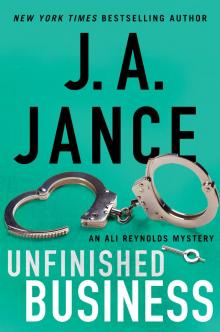 Unfinished Business
Unfinished Business Missing and Endangered
Missing and Endangered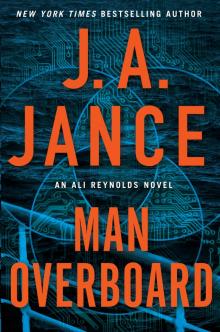 Man Overboard
Man Overboard The Old Blue Line
The Old Blue Line Trial by Fury
Trial by Fury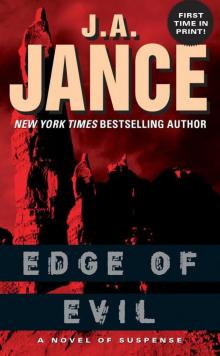 Edge Of Evil
Edge Of Evil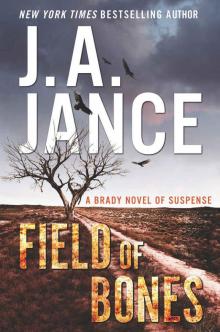 Field of Bones: A Brady Novel of Suspense (Joanna Brady Mysteries)
Field of Bones: A Brady Novel of Suspense (Joanna Brady Mysteries) After the Fire
After the Fire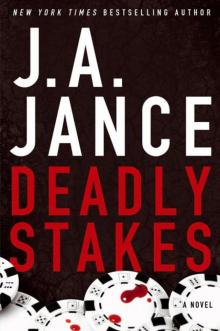 Deadly Stakes
Deadly Stakes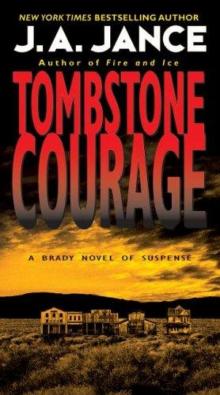 Tombstone Courage jb-11
Tombstone Courage jb-11 Justice Denied
Justice Denied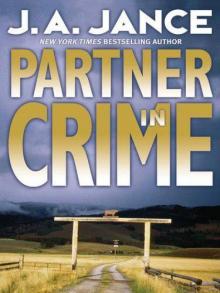 J P Beaumont 16 - Joanna Brady 10 - Partner In Crime (v5.0)
J P Beaumont 16 - Joanna Brady 10 - Partner In Crime (v5.0)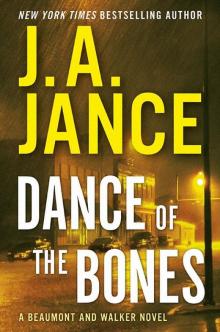 Dance of the Bones
Dance of the Bones Exit Wounds
Exit Wounds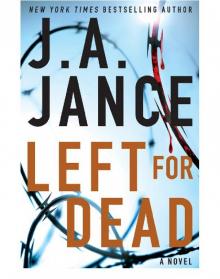 Left for Dead
Left for Dead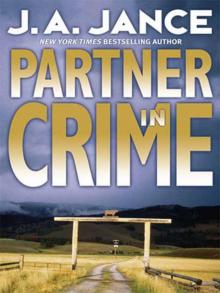 Partner In Crime
Partner In Crime Brandon Walker 02 - Kiss Of The Bees (v5.0)
Brandon Walker 02 - Kiss Of The Bees (v5.0)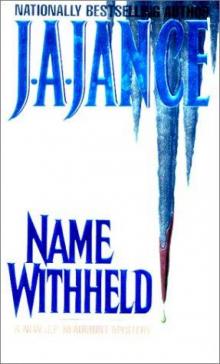 Name Witheld jpb-13
Name Witheld jpb-13 Joanna Brady 01 - Desert Heat (v5.0)
Joanna Brady 01 - Desert Heat (v5.0) Proof of Life
Proof of Life Random Acts
Random Acts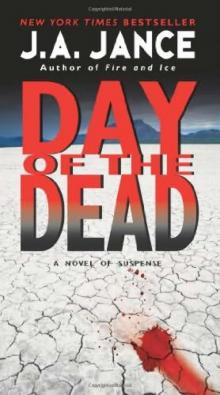 Day of the Dead bw-3
Day of the Dead bw-3 Shoot / Don't Shoot jb-3
Shoot / Don't Shoot jb-3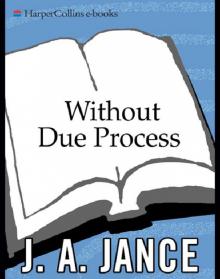 Without Due Process
Without Due Process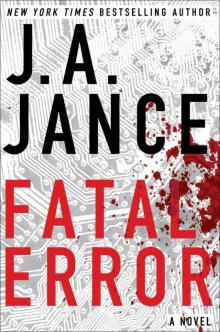 Fatal Error ar-6
Fatal Error ar-6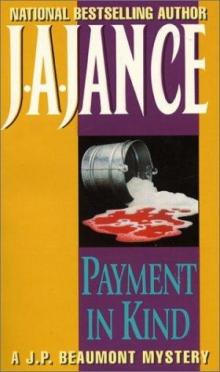 Payment in Kind
Payment in Kind Long Time Gone
Long Time Gone Minor in Possession
Minor in Possession Stand Down
Stand Down Judgment Call
Judgment Call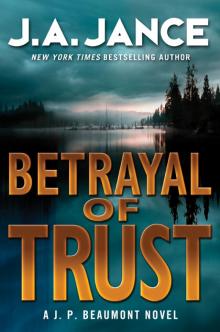 Betrayal of Trust jpb-20
Betrayal of Trust jpb-20 Hand of Evil
Hand of Evil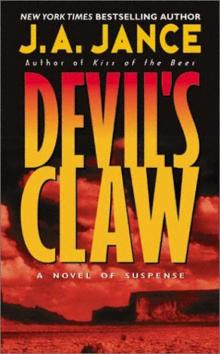 Devil's ClawJ
Devil's ClawJ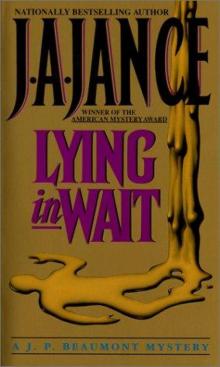 Lying in vait jpb-12
Lying in vait jpb-12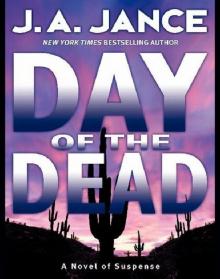 Day of the Dead
Day of the Dead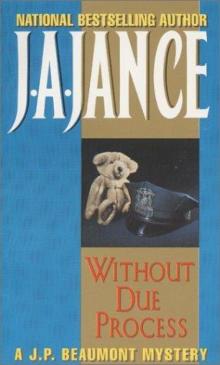 Without Due Process jpb-10
Without Due Process jpb-10 Until Proven Guilty jpb-1
Until Proven Guilty jpb-1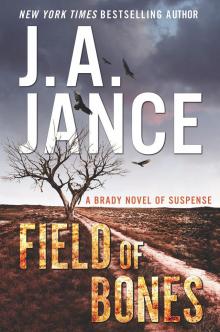 Field of Bones
Field of Bones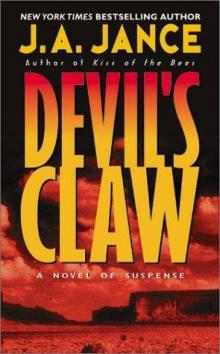 Devil’s Claw
Devil’s Claw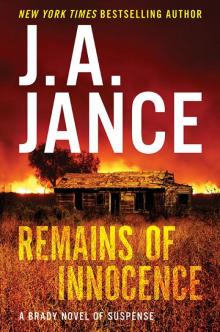 Remains of Innocence
Remains of Innocence Injustice for All
Injustice for All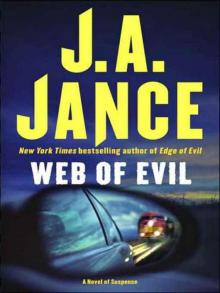 Web of Evil ar-2
Web of Evil ar-2 Paradise Lost jb-9
Paradise Lost jb-9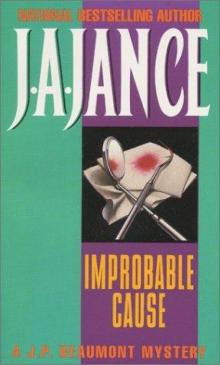 Improbable cause jpb-5
Improbable cause jpb-5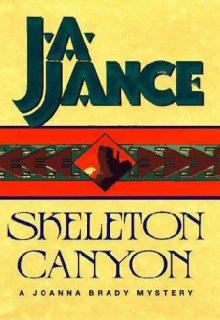 Skeleton Canyon
Skeleton Canyon No Honor Among Thieves: An Ali Reynolds Novella (Kindle Single)
No Honor Among Thieves: An Ali Reynolds Novella (Kindle Single) Dead to Rights
Dead to Rights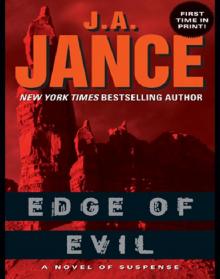 Alison Reynolds 01 - Edge Of Evil (v5.0)
Alison Reynolds 01 - Edge Of Evil (v5.0) Ring In the Dead
Ring In the Dead Ring in the Dead: A J. P. Beaumont Novella
Ring in the Dead: A J. P. Beaumont Novella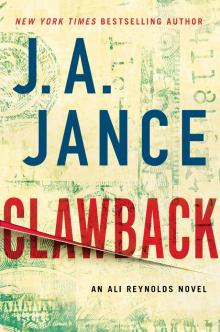 Clawback
Clawback Kiss the Bees bw-2
Kiss the Bees bw-2 Fire and Ice jpb-19
Fire and Ice jpb-19 Downfall
Downfall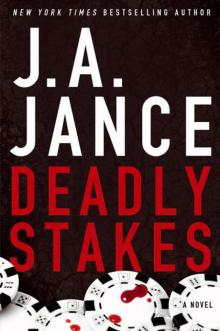 Deadly Stakes ar-8
Deadly Stakes ar-8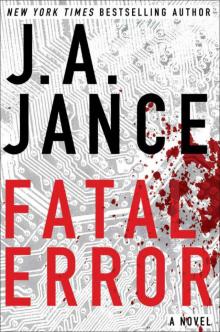 Fatal Error
Fatal Error Name Withheld
Name Withheld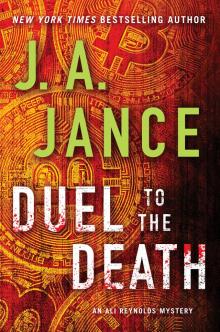 Duel to the Death
Duel to the Death Cold Betrayal
Cold Betrayal Betrayal of Trust
Betrayal of Trust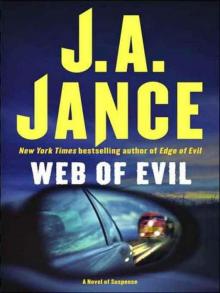 Web of Evil
Web of Evil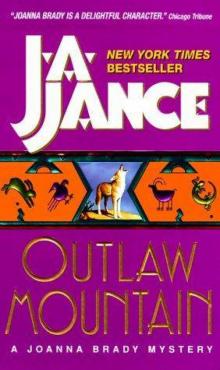 Outlaw Mountain
Outlaw Mountain Shoot Don't Shoot
Shoot Don't Shoot A Last Goodbye
A Last Goodbye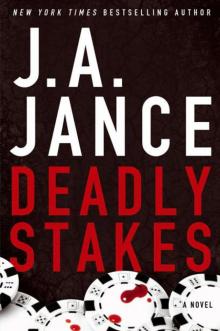 Ali Reynolds 08 - Deadly Stakes
Ali Reynolds 08 - Deadly Stakes Hour of the Hunter: With Bonus Material: A Novel of Suspense
Hour of the Hunter: With Bonus Material: A Novel of Suspense Trial by Fire
Trial by Fire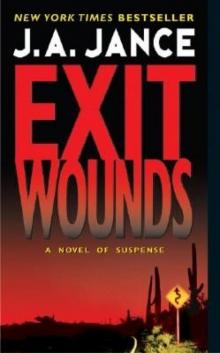 Exit Wounds jb-11
Exit Wounds jb-11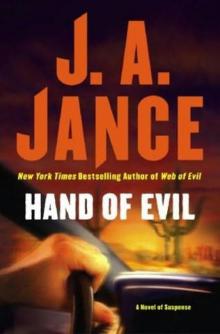 Hand of Evil ar-3
Hand of Evil ar-3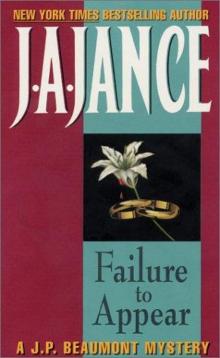 Failure to appear jpb-11
Failure to appear jpb-11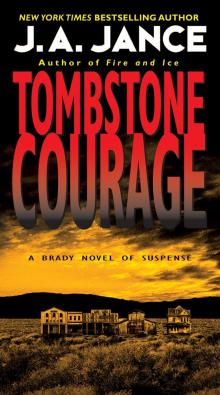 Tombstone Courage
Tombstone Courage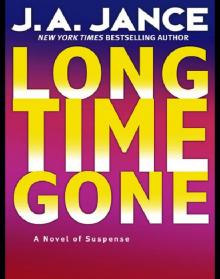 Long Time Gone jpb-17
Long Time Gone jpb-17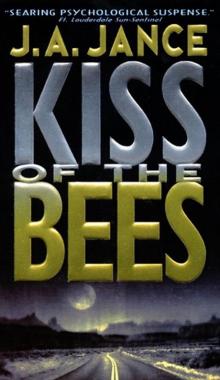 Kiss of the Bees w-2
Kiss of the Bees w-2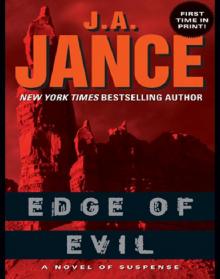 Edge of Evil ar-1
Edge of Evil ar-1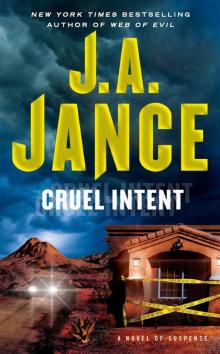 Cruel Intent
Cruel Intent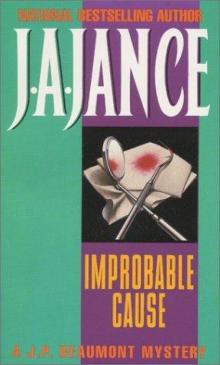 Improbable Cause
Improbable Cause Still Dead
Still Dead Downfall (2016)
Downfall (2016) Justice Denied jpb-18
Justice Denied jpb-18 Damage Control
Damage Control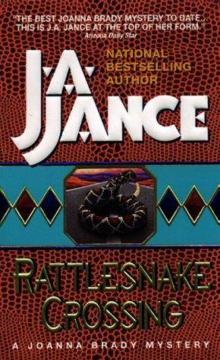 Rattlesnake Crossing
Rattlesnake Crossing Desert Heat
Desert Heat Queen of the Night
Queen of the Night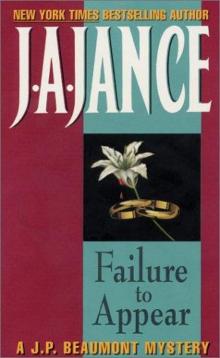 JP Beaumont 11 - Failure To Appear (v5.0)
JP Beaumont 11 - Failure To Appear (v5.0)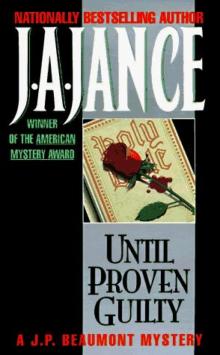 Until Proven Guilty
Until Proven Guilty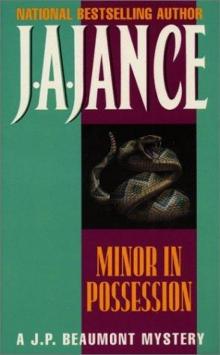 Minor in possession jpb-8
Minor in possession jpb-8 Left for Dead ar-7
Left for Dead ar-7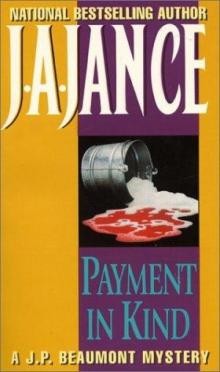 Payment in kind jpb-9
Payment in kind jpb-9 No Honor Among Thieves
No Honor Among Thieves